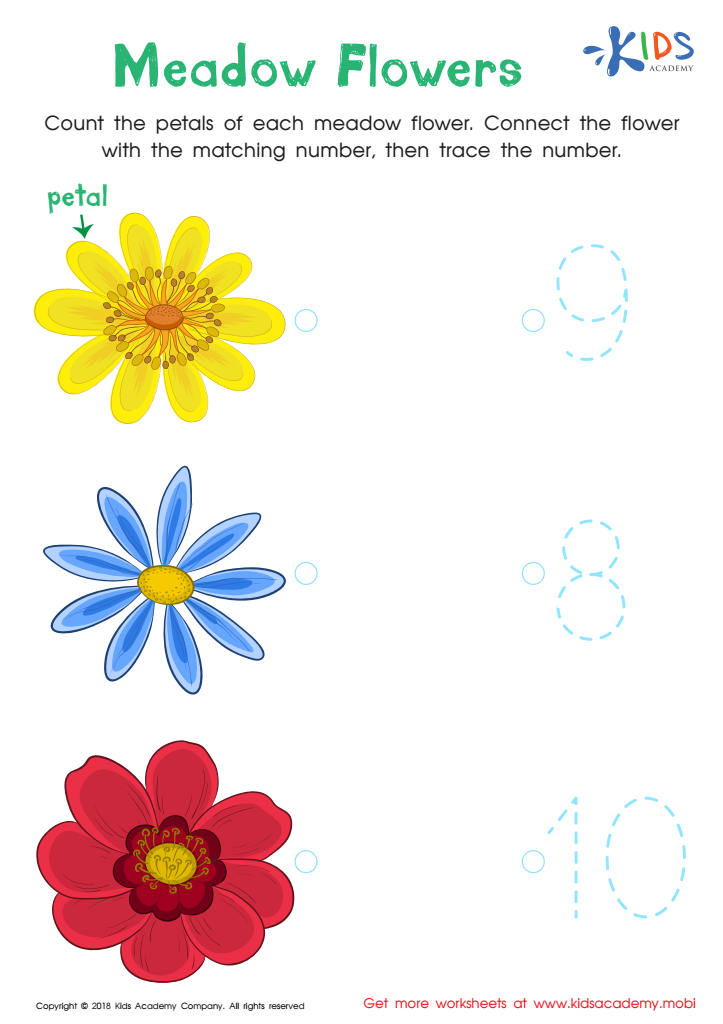Tracing worksheets activities for Ages 3-5 - Page 7
145 filtered results
-
From - To


Kindergarten Number Tracing: Medow Flowers Worksheet
Tracing worksheets activities are an incredibly valuable tool in the learning journey, especially for young learners. These activities offer a structured pathway for children to develop their fine motor skills, handwriting abilities, and cognitive recognition of shapes, letters, and numbers. Let's delve into why tracing worksheets activities are so beneficial.
Firstly, tracing worksheets are instrumental in enhancing fine motor skills. As children follow the outlines on the worksheets with their pencils or crayons, they learn to control their hand movements. This precision is crucial for tasks beyond writing, including tying shoelaces, buttoning clothes, and using scissors. By starting with tracing activities, children lay the groundwork for more complex motor skills.
Moreover, tracing worksheets serve as a foundational step in learning how to write. Before children can form letters and numbers independently, they need to understand their shapes and strokes. Tracing worksheets provide a guided pathway, helping children become familiar with the motions involved in writing. This hands-on practice boosts their confidence and prepares them for successful writing experiences in the future.
Another significant benefit of tracing worksheets activities is the enhancement of cognitive skills. As children trace over shapes, letters, and numbers, they engage in visual-spatial reasoning. They learn to recognize and differentiate between various forms, an essential skill for reading and mathematical reasoning. Additionally, the repetitive nature of tracing reinforces memory, aiding in the faster recall of shapes and symbols.
Furthermore, tracing worksheets can be incredibly versatile, catering to various learning levels and interests. Whether it's alphabets, numbers, shapes, or themed illustrations, there's a tracing worksheet to capture the attention of every learner. This variety ensures that children remain engaged and motivated, making learning an enjoyable experience.
In conclusion, tracing worksheets activities are a multifaceted educational tool. By enhancing fine motor skills, laying the foundation for writing, boosting cognitive abilities, and maintaining learner engagement, they play a critical role in early childhood development. Tracing worksheets are not just about following lines; they're about building the skills necessary for future learning success.
 Assign to the classroom
Assign to the classroom












